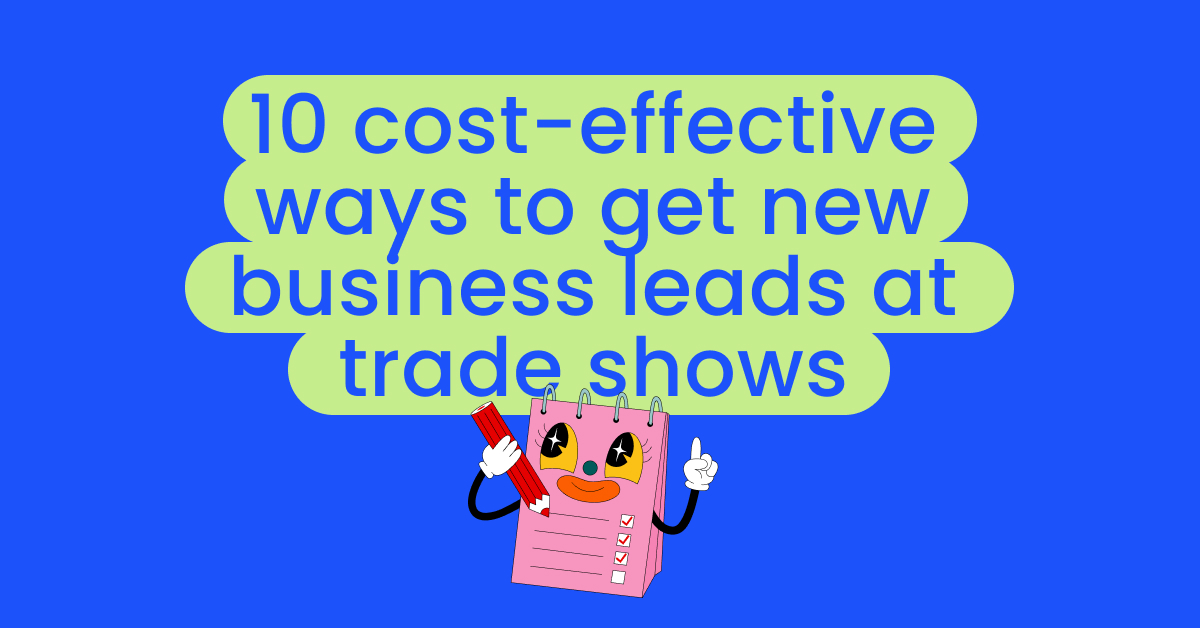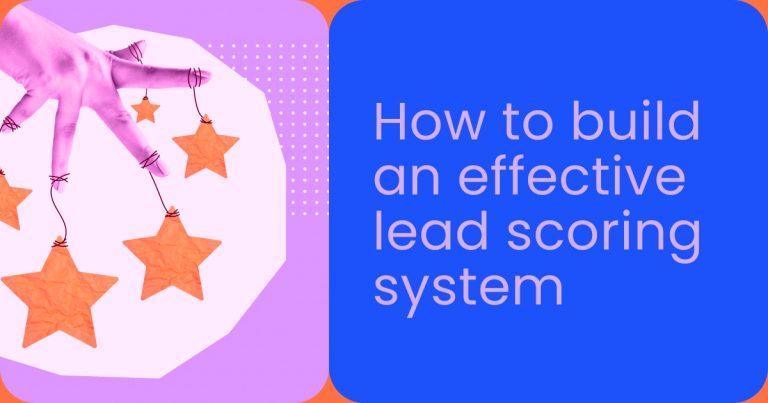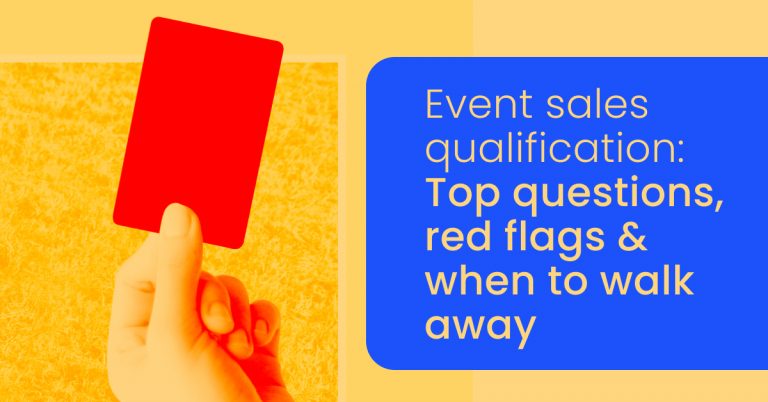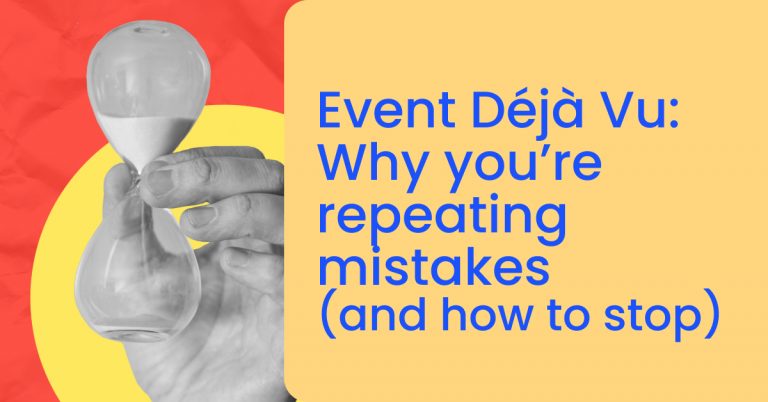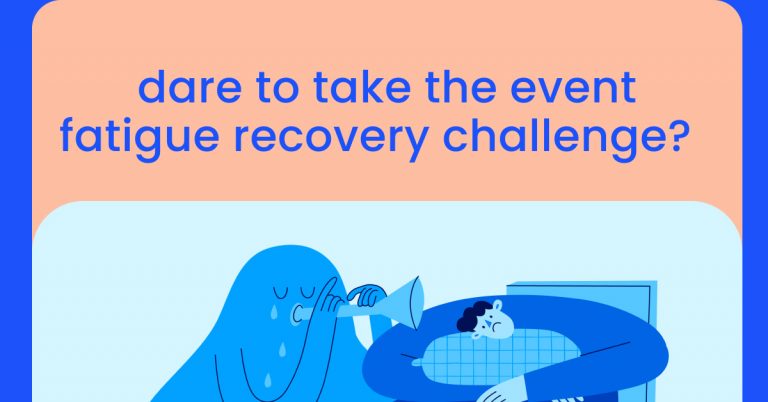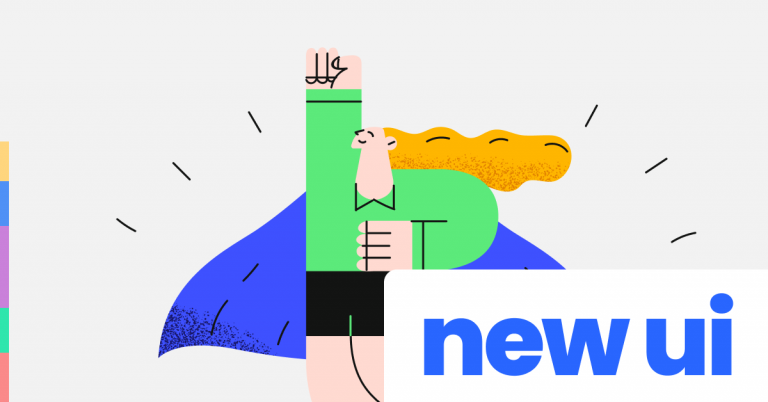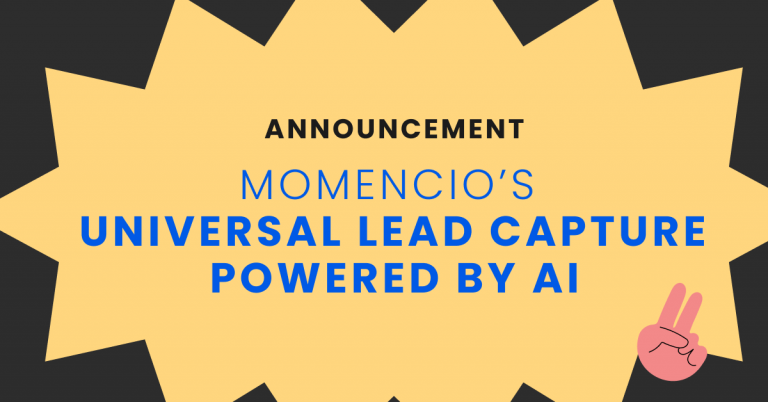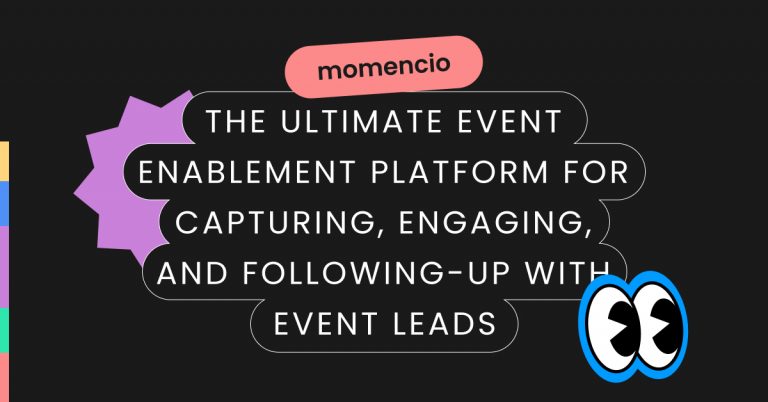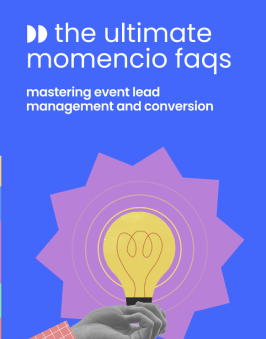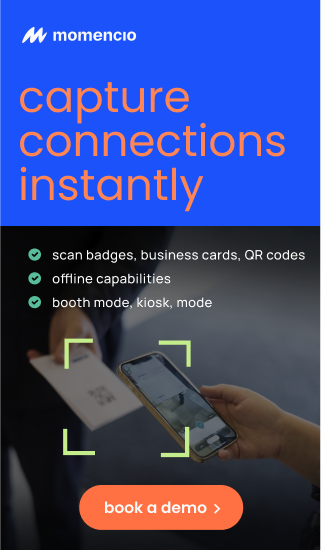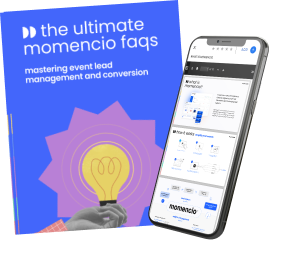Trade shows are loud. Not just the noise, but the noise of expectation.
Booths.
Badges.
Banners.
Bragging.
And somehow, in all that effort, in all that spend, we forget the simplest truth: leads don’t come from the event. They come from attention. From trust. From relevance.
It’s easy to assume that more money equals better results. Bigger screens. Flashier giveaways. A coffee bar, maybe. But none of those things guarantee what we’re really after—new business leads who actually want to talk after the event is over.
The hard part isn’t finding people. Trade shows are full of people. The hard part is making them care. Making them choose to come closer, instead of walking past. Making a connection that outlives the handshake.
Most teams leave with a spreadsheet full of names. But names aren’t leads. Conversations are.
This isn’t a list of gimmicks. It’s a compass. A way to think differently about how you show up, how you invite, and how you engage.
Because the real ROI at trade shows doesn’t come from standing out.
It comes from standing for something.
Ready to begin?
1. Tap into pre-registered attendee interest—without buying lists
Most exhibitors wait.
They wait for foot traffic. They wait for badge scans. They wait for conversations to come to them. But the best conversations don’t happen because someone walked by. They happen because you were already on their mind.
Here’s the shift: Stop thinking of trade shows as day-of events. Start thinking of them as multi-week campaigns, where the booth is just one chapter.
You don’t need to buy expensive attendee lists to do this. You don’t even need access to the full roster. What you need is a smarter way to identify interest and act on it early.
Use signals.
Every trade show has them. Posts. Mentions. Shared hashtags. Partner announcements. Speaker lists. Pages that show who’s sponsoring, who’s exhibiting, who’s engaging.
That’s where you start. You look for the people who are leaning in.
Then, you offer something better than “come visit our booth.” You offer context. You offer curiosity.
Send a message. A personal one.
“I saw you’re attending [event name]. I work with [relevant industry challenge]. We’ve built a simple framework that helps fix that—no pitch, just want to share it with 5 people at the event. Interested?”
It’s not about pushing product. It’s about starting a story. One that doesn’t rely on loud graphics or swag to get attention.
And if you’re using a platform like momencio, you already have an edge. You can track responses. Pre-tag interest levels. Add notes. Create micro-segments before the event even begins. So by the time the booth opens, you’re not guessing who to talk to—you already know.
Here’s a bonus move: instead of going solo, collaborate with a non-competing partner at the show. Create a shared “value exchange” for a very narrow audience—something useful, something specific, something that gets passed around.
You don’t need mass appeal. You need intent.
That’s how you get real new business leads before anyone’s even stepped onto the carpet.
You earn them by showing up early. Quietly. Intentionally.
2. Run a reverse discovery at your booth
Most booths are built to talk. Loudly.
Screens looping product videos. Reps launching into their pitch. But here’s the thing—people don’t come to trade shows to be sold to. They come to discover.
And yet, booth after booth is a monologue. Not a dialogue. Not a space for them to figure out what they want. Just a script someone else wrote.
So let’s flip it.
Instead of starting with your story, start with theirs.
Create a small, intentional flow inside your booth—one that invites them to discover where they fit in, before they ever speak to your team.
It doesn’t take a big budget. Just a better question.
Set up a simple interactive experience. It could be a digital card sort, a short diagnostic, a quick scan-and-choose survey. Think of it as a “choose your own path” moment.
Three questions. One goal: To help them realize what their real problem is. Not what you think it is.
With momencio, you can build that logic directly into your lead capture flow.
So every interaction becomes a filter. Every response becomes a signal.
Your reps know who they’re talking to and what matters to them—before they start talking.
Here’s what happens next:
- Visitors feel seen. Because it’s not about your pitch. It’s about their challenge.
- Your team saves time. Because they’re only investing energy where there’s real alignment.
- Your follow-ups become sharper. Because they’re based on what they said, not what you assumed.
And here’s the real kicker—people remember how they felt at your booth more than what you said.
If your space helps them get clarity, even for a minute, they’ll come back. They’ll talk. They’ll refer.
Reverse discovery isn’t a tactic. It’s respect.
You don’t need louder messaging. You need a better mirror.
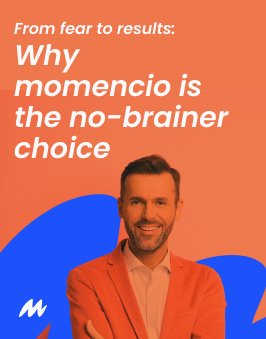
3. Partner with a non-competing brand for lead share sampling
One of the most overlooked assets at a trade show isn’t the space you pay for—it’s the space you co-create. And no, this isn’t about co-sponsoring lanyards or slapping two logos on a flyer. It’s about intent. Thoughtful collaboration with another brand that speaks to the same audience in a different language.
The challenge most businesses face is reach. Not just reaching more people, but reaching the right ones. But there’s a way to multiply attention without multiplying spend. You find someone else with a puzzle piece that fits next to yours.
If you’re a product company, partner with a service provider. If you’re a platform, look for a peripheral solution that naturally fits your customer’s workflow. The point isn’t overlap—it’s adjacency. When your offerings complement instead of compete, you create a shared space of value.
Together, build a simple but intentional interaction. A visual diagnostic. A trade show-specific scorecard. A “side-by-side” worksheet that helps attendees see both problems and solutions in one glance. Keep it short. Keep it useful. And make sure it leads to a conversation—not a pitch.
Here’s the important bit: don’t just trade logos, trade context. If someone shows interest in your partner’s value prop and lingers with yours, that’s a stronger signal than a generic badge scan. With momencio, you can tag those interactions on the spot. You know which lead came from the shared touchpoint, what path they took to find you, and what triggered their interest.
This isn’t lead generation. It’s lead resonance.
And the best partnerships don’t end when the trade show does. Once the event is over, you and your partner can reconnect over shared leads, compare engagement notes, and even co-host a follow-up webinar or post-event debrief. What began as a simple booth strategy becomes a content collaboration, a referral engine, or even a future integration.
Instead of standing alone hoping for visibility, you stand together building velocity. One conversation sparks two, and two spark a relationship.
That’s not a booth strategy. That’s a business development strategy disguised as one.
4. Capture leads from your competitors’ overflow traffic
They weren’t supposed to stop at your booth.
You saw it happen all day—attendees making a beeline for the big-name competitor just across the aisle. Bigger space. Brighter screens. A line of people waiting for their turn to scan a badge and grab branded coffee.
But then, something shifted.
You positioned one team member a few feet outside your booth—never pushy, just present. No clipboard. No “Hey, can I steal you for a second?” Just a small, clean placard that read:
Confused between options? Here’s a one-minute cheat sheet to make sense of it.
It wasn’t flashy. It wasn’t confrontational. But it worked.
People glanced. Paused. Then smiled.
Some took the printed card. Some scanned the code. Some leaned in with a quiet: “Yeah, actually… I’ve been wondering what really makes you different.”
That was the moment.
No one was lured. No one was sold. They simply chose to have a conversation. Because you offered clarity in a space where they were being overwhelmed with noise.
And here’s where it gets better.
Using momencio, that interaction was captured instantly—not just the name and badge scan, but what they engaged with. You tagged them with “competitive interest,” linked their follow-up to a content asset comparing key features, and routed them to the rep who could handle nuanced objections.
Most booths lose attention to competitors. You converted it.
You didn’t poach. You positioned. You respected the attendee’s journey, offered a small moment of value, and opened a door for those who were already asking questions in their head.
You don’t need to be the loudest booth on the floor. You just need to be the clearest.
5. Create a dead leads revival zone
Some leads don’t need to be found. They just need to be remembered.
Most teams walk into trade shows obsessed with net-new prospects. Fresh names. Fresh scans. Fresh conversations. But the truth is, your next customer might already be in your database—they’re just asleep. Stuck somewhere between “not now” and “forgot who you were.”
This is where the revival zone comes in.
Before the show, pull a list of leads that once showed intent but never moved forward. The demo no-show from three months ago. The proposal ghost from last year. The newsletter subscriber who clicked but never booked. These aren’t cold leads. They’re lukewarm. Familiar. Human. They just need a reason to reconnect.
Then, reach out. Not with a mass email. Not with a marketing drip. With a real message, from a real person.
“Hey, you popped into mind—we’re going to be at [event name] this week. If you’re around, I’d love to reconnect. No agenda. Just a quick catch-up.”
No pitch. No PDF attached. Just the reminder that you still exist and still care.
At the event, make space for these conversations. Literally. Carve out a corner of your booth or book a few time slots at a nearby table. Label it “revival” in your calendar, even if no one else knows. When one of them shows up, don’t dive into features. Ask: “What’s changed since we last spoke?”
You’ll be surprised how often the answer is: “Actually… quite a bit.”
With momencio, you can tag them as re-engaged, update their journey status, and trigger a new, smarter follow-up sequence after the event—based on who they are now, not who they were then.
This isn’t just cost-effective. It’s time-effective.
It takes less effort to rewarm trust than to build it from scratch. And it reminds your team that leads aren’t just data—they’re people with timelines that don’t always match your quarter.
Sometimes the best way to generate new business leads is to stop chasing strangers… and start re-inviting the ones who already knocked once.
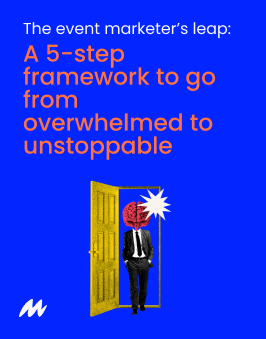
6. Turn product demos into mini content studios
Most exhibitors treat demos like isolated moments—one rep, one prospect, one conversation. But when you view each demo as a piece of content, suddenly every interaction can work twice as hard.
Here’s how to turn your booth into a low-budget, high-leverage content engine while capturing high-intent leads:
Step 1: Define a single moment worth capturing
Don’t record the entire pitch. That’s wasteful and irrelevant. Instead, identify one specific question that always sparks curiosity during demos. Something like:
“What’s the biggest bottleneck this feature solves for you?”
This becomes your golden question—simple, open-ended, and valuable when answered on camera.
Step 2: Offer opt-in micro-recordings to qualified booth visitors
After a meaningful demo, say: “We’re collecting one-sentence answers from real attendees. If you’re up for it, we’d love to capture yours. It’ll be shared as part of a post-event highlights reel, and you’ll get a copy too.”
No hard sell. Just a casual, useful exchange. Those who say yes are signaling deep interest and trust.
Step 3: Use momencio to tag and segment these leads
Mark them as “content contributors.” These leads aren’t just engaged—they’re co-creating. That’s a huge psychological anchor for post-show follow-up. They’ll remember you because they’re now part of your narrative.
Step 4: Repurpose after the event
Stitch together a short video reel featuring those authentic, unpolished clips. Use them in recap emails. Post them on LinkedIn. Share them in sales follow-ups. Let real users speak to other prospects.
Step 5: Reconnect with contributors personally
Send them their clip with a simple note: “Thanks again for being part of our highlights. Here’s your clip. Also, based on what you said at the booth, I’ve attached something that might help you move forward.”
This one interaction does four things at once:
- Captures a qualified lead
- Anchors your product to their real problem
- Builds a sense of ownership and connection
- Gives your team authentic content for future conversations
No expensive camera crews. No scriptwriters. Just a tripod, a phone, and a clear question.
7. Offer a trade show-exclusive tool or asset—not a giveaway
The problem with most trade show swag is this: it’s forgettable. A tote bag, a stress ball, a generic eBook link—none of these drive qualified interest. They signal nothing about the buyer’s intent. They don’t start conversations, and they definitely don’t continue them.
But exclusivity does something different. It creates a sense of urgency. It frames your offer as something scarce, time-bound, and valuable—without requiring a big spend.
Here’s how to do it right:
Start by identifying a pain point your product solves. Not the broad one. The edge-case one. The frustrating, recurring, not-talked-about-enough one that your ideal prospect silently battles.
Now, build a small digital asset around it. It could be a:
- Scorecard (e.g., “rate your team’s lead handoff process”)
- Calculator (e.g., “see how much revenue you’re losing from delayed follow-ups”)
- Cheat sheet (e.g., “top 5 mistakes we see at every trade show booth”)
- Decision map (e.g., “when to fix your current system vs. replace it”)
Keep it tight. One page. One idea. One takeaway. Then gate it—not behind a form, but behind a booth visit.
Let your team use it like this: “Hey—we built something specifically for people here who deal with [X problem]. We’re not sharing it publicly. If it helps, we can send it to you right after this.”
The asset itself isn’t the magic. It’s the positioning. It tells the lead:
- We understand your specific problem
- We built something useful instead of giving you a branded pen
- We won’t spam you—we’re sending this because we talked
Once shared through momencio, the lead is tagged, the content is delivered instantly, and your rep has a real reason to follow up.
And here’s the best part: unlike swag, exclusive tools get forwarded. They get shared with teammates. They start conversations inside buying committees. All without costing more than an hour or two of prep.
Exclusivity signals care. Specificity signals expertise. Together, they generate trust—and trust brings leads back.
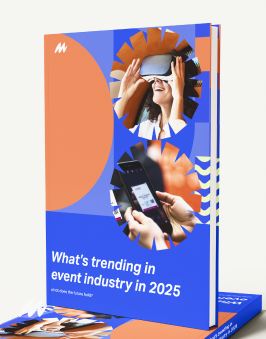
8. Deploy a roaming rep with mobile lead capture
Before |
After |
Your entire sales team is stationed at the booth. You’re relying on people to come to you. The floor gets quiet after peak hours. Everyone waits. You’ve spent thousands on booth placement, design, and giveaways—yet half your potential leads never make it past the front row of the floor. |
One of your reps isn’t at the booth at all. They’re walking the venue with purpose. Standing in coffee lines. Sitting in breakout sessions. Having casual conversations where real problems come up. And every time there’s a moment of curiosity—“What do you guys do, anyway?”—they pull out a phone or tablet and capture the lead right there with momencio. No booth required. No badge scanning drama. Just real-world context turned into clean, qualified records. |
Here’s how to do it:
- Pick the right rep. Not a cold caller. A listener. Someone comfortable in casual situations, who doesn’t need a booth backdrop to sound credible.
- Give them intent. Don’t just tell them to mingle. Assign three session themes, lunch windows, or networking pockets where your audience is likely to gather. Make it deliberate.
- Equip them with a mobile lead capture setup. Phone, tablet, and a short talking point.
Example: “We’re actually helping teams at this event fix [X] problem. We’re not exhibiting the usual way, but I can send you something that shows how we’re doing it if you’re interested.”
- Use momencio to tag the context. “Met during session on X.” “Asked about integration.” “Interested but on the fence.” That context makes all the difference when it’s time to follow up.
This approach works because it moves you to where the conversations already are. It’s the opposite of waiting. It’s also one of the only ways to connect with introverts and time-strapped attendees who avoid the main floor altogether.
Most leads aren’t hiding. They’re just not stopping at booths.
A roaming rep doesn’t need screens, banners, or flashy demos. Just the right conversation and the right moment to say, “Let me send you something that might help.”
9. Embed a “quick filter” CTA into every booth interaction
Every booth rep knows the feeling—someone walks up, chats for a few minutes, nods politely, and then disappears. You scan their badge, tag them as “interested,” and move on.
But interest isn’t intent. And without a clear signal, your team ends up chasing ghosts after the event.
Here’s the shift: teach every rep to close each conversation with a soft opt-in. Not a hard CTA. Not a “Can I book a demo with you?” That’s too early. Too assumptive. What works better is a simple moment of choice.
Try this: “Would it be helpful if I sent you something based on what we just talked about? Or was this more of a casual browse?”
No pressure. No awkwardness. Just an open door, with the visitor deciding whether to step through.
What happens next is powerful:
- The ones who say yes are signaling real interest. You tag them in momencio with follow-up priority.
- The ones who say “just browsing” give you clarity. You can still log them, but you don’t waste a week nurturing someone who was just killing time.
This one sentence transforms lead capture from transactional to intentional. It respects the attendee’s time and protects your team’s energy.
It also builds trust—because people remember when they weren’t pushed.
And the beauty? It costs nothing. No tech stack overhaul. No booth redesign. Just a sentence your reps say 50 times a day.
Lead qualification isn’t about scoring. It’s about asking a better question at the right moment.
10. Host an under-the-radar, in-booth learning moment
Before the show:
You pick one insight. Not a pitch. Not a slide deck. Just a sharp, unexpected lesson that solves a specific pain your audience faces—something no one else is talking about on stage. You give it a name. A 10-minute fix. A field story. A teardown. You print one small tabletop sign for it. That’s it.
You tell your team: “We’re not making this a show. We’re making this a spark.”
During the show:
Every hour, on the hour, someone from your team gathers 3 to 5 booth visitors. No chairs. No stage. Just a standing circle, and one of your team casually walking them through that one insight.
It might be:
- “Three follow-up emails that kill interest—and what to write instead”
- “Why your lead conversion drops after trade shows (and what to fix before you leave)”
- “The small handoff mistake that costs you thousands in pipeline every quarter”
You walk through it conversationally. No pitch. You end with: “If this resonates, we’ve got a 2-minute breakdown we can send you right after. Want it?”
They say yes. You capture the lead in momencio, tagged with the specific content they asked for.
After the moment:
You follow up with that exact resource, and nothing else. No “thanks for stopping by.” No generic company overview. Just what you promised.
That one 10-minute conversation creates clarity, connection, and context. It positions you as a guide, not a vendor. And it costs less than a single printed brochure.
Most booths are built for attention. Yours is now built for alignment.
Conclusion
If there’s one thing these ten strategies prove, it’s this: you don’t need a massive budget to generate strong new business leads at trade shows. What you need is intention. Precision. The willingness to think differently about how attention is earned, and how trust is built.
Every idea we explored—from quiet pre-show outreach to reverse discovery conversations, partner-powered lead swaps to in-booth learning moments—has one thing in common. They’re all rooted in clarity over chaos. In quality over quantity. They help you focus less on traffic, and more on traction.
Most exhibitors leave with lists. The smart ones leave with momentum. And that difference often comes down to the structure behind the strategy.
Because even the most thoughtful lead capture plan breaks down without a way to manage it in motion. You lose context. You forget who said what. You struggle to follow up in a way that feels personal, not robotic.
That’s where momencio becomes more than just a lead capture app—it becomes your anchor.
It doesn’t just record data. It remembers nuance. It helps your team stay present in conversations while quietly tracking what matters. And when the show is over, it makes follow-up feel like a continuation—not a restart.
With momencio, your smartest trade show strategies don’t get lost in the noise. They get documented, delivered, and turned into deals.
So yes, this was a post about saving money. But more than that, it’s about spending your time and attention where it counts—and letting the right system do the heavy lifting behind the scenes.
Trade shows are unpredictable. Your lead generation strategy doesn’t have to be.
FAQs
- What’s the most cost-effective way to get new business leads at trade shows if I don’t have a big booth or premium placement?
- Focus on pre-event engagement. Reach out to attendees before the event using mutual connections, content-led messages, or simple calendar invites. You don’t need foot traffic when you’ve already booked the meetings. A well-planned conversation beats random walk-ins every time.
- How do I qualify leads on the show floor without sounding like I’m interrogating people?
- Use softer opt-ins. Ask something like, “Would you like me to send you something based on what we talked about?” It’s conversational, respectful, and helps surface real interest without pressure. This quick filter alone will save you hours of wasted follow-up later.
- Is there a way to engage people who don’t stop at our booth but are clearly interested in the event?
- Yes—deploy a roaming team member outside your booth. Equip them with a mobile lead capture tool like momencio and send them to sessions, queues, or lounges where your target audience naturally gathers. Casual, off-booth conversations often convert better than formal pitches.
- We usually give away swag to attract people. What’s a better low-cost alternative that actually drives leads?
- Create an exclusive, valuable asset tied to a specific problem—like a short scorecard or calculator—and only share it with booth visitors. Position it as event-only and practical, not promotional. People don’t share tote bags with their team. They share tools.
- How do I make sure we actually follow up properly after the event without drowning in spreadsheets?
- Structure your lead capture process with tags, notes, and content requests in real time using momencio. When every lead is automatically categorized based on conversation, follow-up becomes frictionless. You’re not guessing what they cared about—you’re picking up exactly where you left off.
Interesting facts from research
- 85% of exhibitors state that their primary goal for attending trade shows is to generate leads.
- Events and trade shows have the highest average cost per lead at $811.
- 59% of trade show marketers report that salespeople are their best booth staffers, compared to 29% who prefer senior management.
